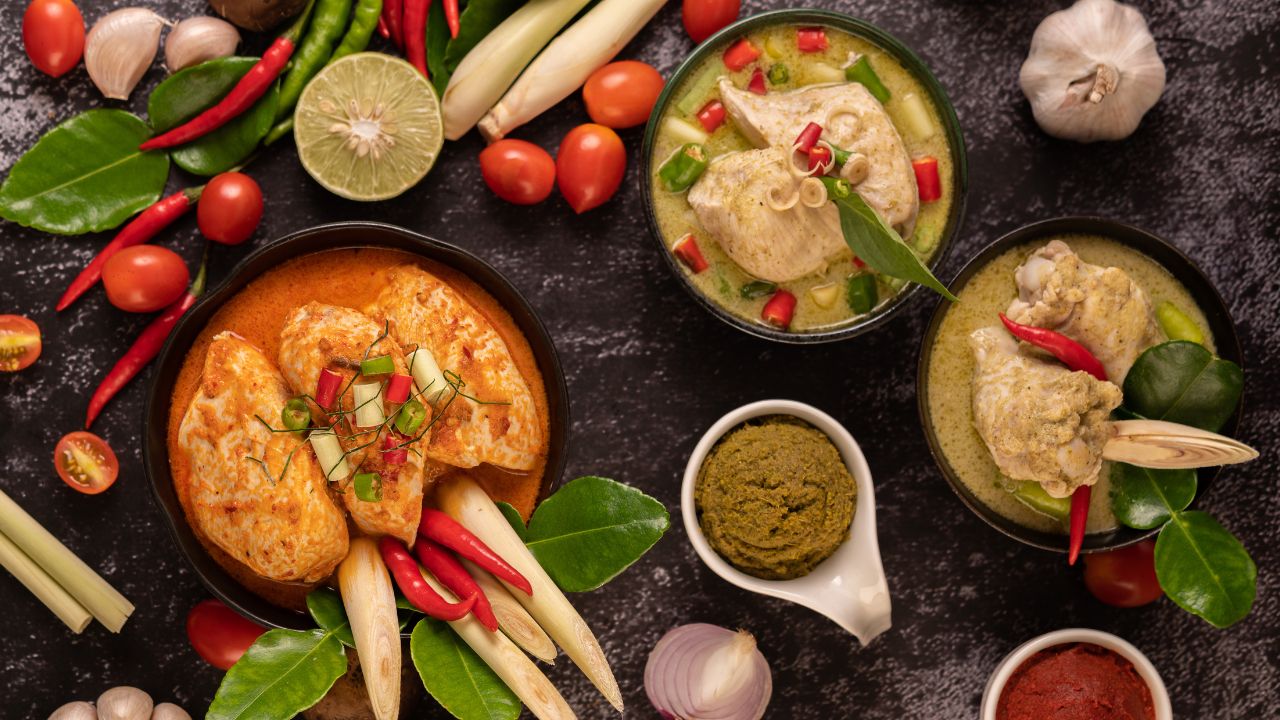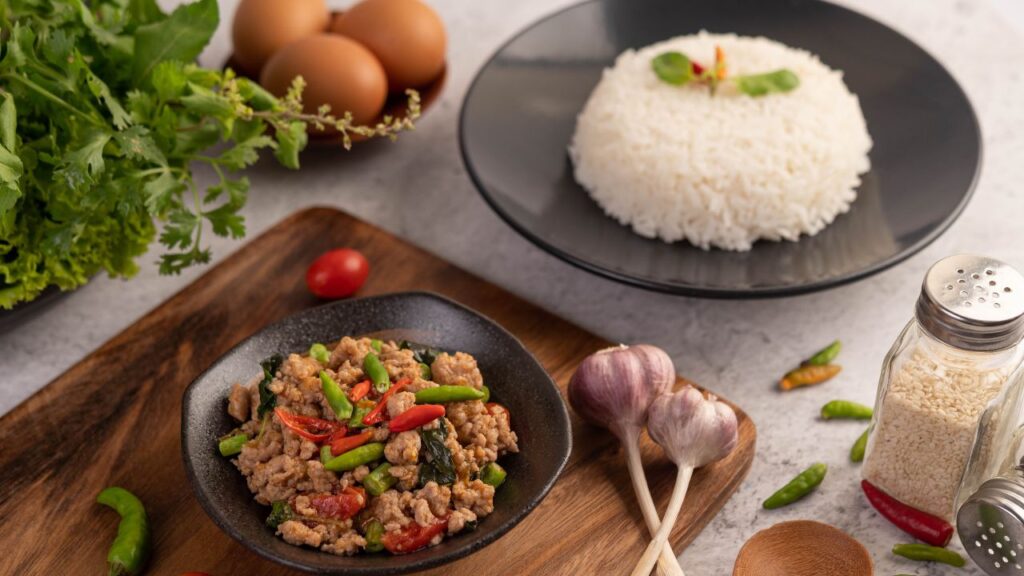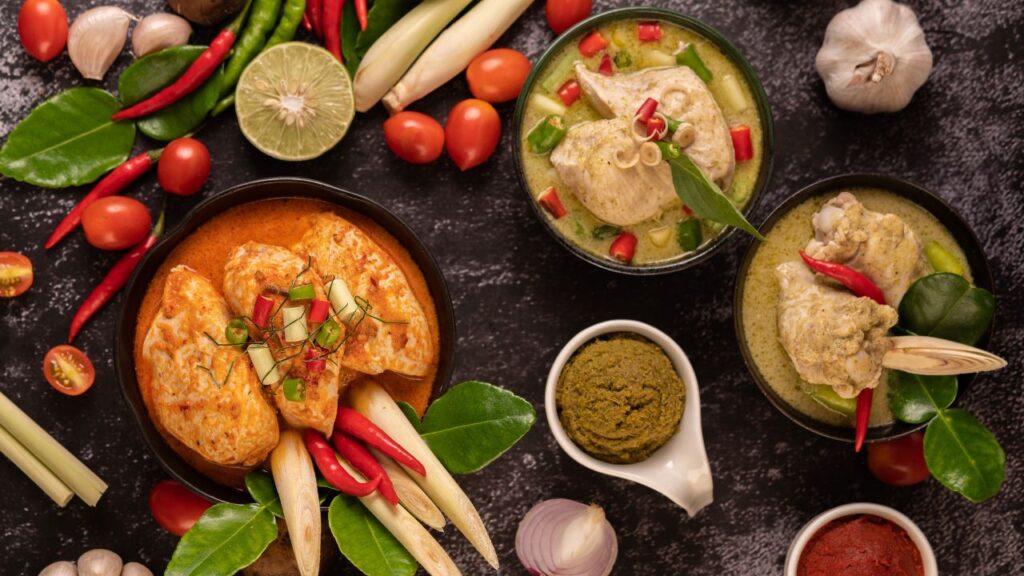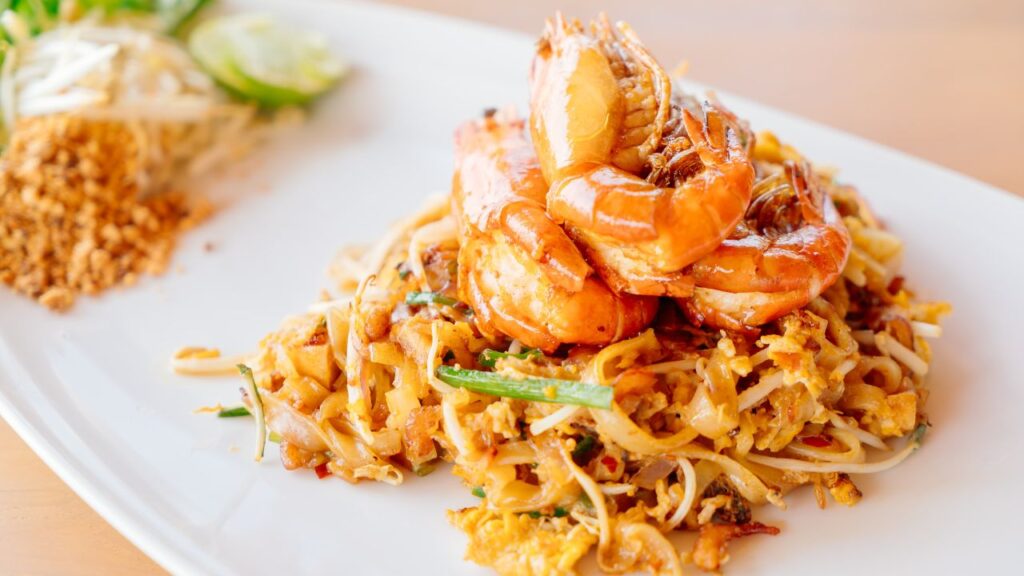Thai cuisine is famous for its rich flavors, aromatic herbs, and colorful dishes. Among the many beloved Thai recipes, two iconic curries often spark debate: green curry and red curry. Both are staples in Thai restaurants and home kitchens alike, but they differ significantly in taste, ingredients, and heat levels.
Whether you’re a curry lover trying to choose between the two or someone new to Thai food, understanding the difference between green curry and red curry can help you make the perfect choice for your next meal. Let’s dive into the vibrant world of Thai curries.
1. Origin and Cultural Background
Both green and red curries are part of Thailand’s culinary heritage and are commonly found throughout the country. They originate from central Thai cuisine and have evolved over generations, with each family and region adding their own twist. While the base techniques are similar, the key difference lies in the type of chilies used, which dramatically affects the flavor, aroma, and heat.
2. Color and Ingredients
Green Curry (Kaeng Khiao Wan)
- Color: Bright green
- Main chili used: Fresh green chilies
- Other key ingredients: Thai basil, lemongrass, galangal, kaffir lime peel, coriander roots, and green peppercorns
The vibrant green color comes from the use of fresh green chilies and a mix of green herbs. It has a fresh and slightly sweet aroma with a touch of bitterness from the herbs.
Red Curry (Kaeng Phet)
- Color: Deep red
- Main chili used: Dried red chilies
- Other key ingredients: Garlic, shallots, galangal, lemongrass, coriander seeds, and cumin
Red curry gets its hue from dried red chilies, which give it a deeper, smokier flavor and a warmer, earthier color tone.
3. Flavor Profile
Green Curry
Green curry is known for its bold herbal flavor and slightly sweet aftertaste. It has a strong aroma thanks to ingredients like kaffir lime leaves and Thai basil. The combination of coconut milk and fresh herbs creates a rich, creamy, and fragrant curry that pairs well with both meat and vegetables.
Red Curry
Red curry tends to be slightly less sweet and more robust in spice. The dried red chilies provide a richer and deeper flavor, while the use of spices like coriander and cumin adds warmth. Red curry is versatile and balances savory, spicy, and slightly sweet notes.
4. Spice Level
While both curries can be spicy, green curry is often considered the hotter of the two due to the use of fresh green chilies, which can have a sharper heat.
That said, spice levels can vary depending on how the curry is made and where you eat it. In many Western Thai restaurants, both curries may be toned down unless requested otherwise. You can always ask for a mild or extra spicy version depending on your preference.
5. Popular Pairings and Proteins
Green Curry is commonly served with:
- Chicken (Green Curry Chicken)
- Fish balls or seafood
- Eggplants and bamboo shoots
- Steamed jasmine rice or rice noodles
Red Curry is often paired with:
- Pork or beef
- Tofu for vegetarian versions
- Bamboo shoots, bell peppers, and basil
- Steamed rice or sticky rice
The rich coconut milk base in both curries allows them to pair well with a wide variety of proteins and vegetables.
6. Cooking Method
Both curries start with a curry paste base fried in a bit of oil, followed by the addition of coconut milk, meat or vegetables, and seasoning. Despite their similar preparation method, the different spice pastes result in distinctly unique dishes.
Green curry often uses more herbs and fresh ingredients, making it slightly more labor-intensive, while red curry can be made in larger batches more easily because of the use of dried ingredients.
7. Which One Should You Choose?
Choose Green Curry if you love:
- Fresh and vibrant flavors
- Spicier heat with a herbal kick
- Thai basil and citrus notes
Choose Red Curry if you prefer:
- A rich, smooth, and smoky flavor
- Moderate heat with a balance of spices
- A more traditional curry taste
If you’re unsure, try both! Thai restaurants often offer both green and red curry on their menu. You might discover that you prefer one for lunch and the other for dinner.
8. Nutritional Content
Both curries are relatively similar in terms of calories and fat, especially since they both use coconut milk as a base. However, green curry may have a slightly higher vitamin content due to the use of fresh herbs. If you’re watching your calorie intake, you can request leaner proteins or more vegetables.
9. Can You Make Them at Home?
Absolutely! Green and red curry pastes are available in most Asian supermarkets or online. With a can of coconut milk, your choice of protein, and some vegetables, you can recreate these dishes at home with ease.
Homemade versions allow you to adjust the spice level and customize ingredients. Don’t forget to top with fresh basil or kaffir lime leaves for an authentic touch.
Conclusion
Green curry and red curry each offer a unique journey into the world of Thai cuisine. Whether you prefer the herbal heat of green curry or the deep, smoky warmth of red curry, both options showcase the complexity and beauty of Thai cooking.
So next time you’re at a Thai restaurant or cooking at home, try comparing the two side by side. You might just fall in love with both!
Read more: What to Expect When Trying Thai Food for the First Time






